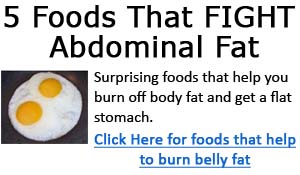Whey
Protein Processing Methods
How Whey Protein is Made (part 1)
Ever wonder what all the gibberish means when you read
the ingredient details on all types of whey protein supplements?
I sure did. Hydrolyzed whey, CFM whey, ion exchange whey...
It sure made no sense to me, when I have no clue what these
processing methods meant! Well, that was a long time ago,
until I decided to figure out what all these meant, and
did some digging. ;-)
The Basics
There are two main components of milk protein: 1) casein
and 2) whey protein. Most of whey protein come as a byproduct
of cheese production. When milk is treated to cause a shift
in pH, the casein coagulates and separates, and raw whey
is the stuff left uncurded on top of the casein. Its then
collected and undergoes various processing steps, and these
processing steps are what determines the quality of the
whey protein end product.
During the processing, fat and lactose are filtered out
to make a lower fat, lower carbs, and higher concentrated
protein powder. The protein content can range from 35% to
95% in whey protein. Obviously, the higher the protein concentration,
the more processing (filtering) is needed, leading to higher
costs as well. Generally, when its greater than 88% protein
concentration, its considered WPI
(whey protein isolate), and less than that, its considered WPC (whey
protein concentrate).
During filtration, low molecular weight compounds like
lactose, minerals, vitamins are removed, and the protein
becomes concentrated. After filtration, the protein is pasteurized,
evaporated, and then dried. The drying is done at low temperatures
to avoid denaturing the whey protein.
Pretty simple so far, right? Good!
Microfiltration, Ultrafiltration, and
Ion exchange Whey Protein
The two basic methods used to process whey protein are
1) microfiltration and Ultrafiltration and 2) ionexchange.
We'll leave microfiltration and ultrafiltration for later
on, lets chat a bit on ionexchange whey protein first.
Ion Exchange Whey Protein
Ionic exchange processing involves separating proteins
based on their electrical charge. 2 chemical are used to
achieve this: hydrochloric acid and sodium hydroxide. The
electrical charge on the proteins attaches them to the resins
in the reaction vessel.
Ion exchange processing costs only about 1/5 as much as
setting up microfiltration. However, because of the chemical
reagents used, pH sensitive fractions are damaged and some
amino acids are denatured. Some components that become denatured
are:
- glycomacropeptides (GMPs) - biologically active
proteins, positive effect on the digestive system, antiviral
activity, improved calcium absorption and enhanced immune
function
- immunoglobulins - antibodies (immune boosting)
- lactoferrin - lactoferrin makes up about 0.5%
- 1% or less of whey protein derived from cows milk (mothers
milk will contain up to 15% lactoferrin). (has anti-viral,
anti-microbial, anti-cancer and immune modulating/enhancing
effects)
- some alpha lactalbumin - contains a large amount
of essential and conditionally essential amino acids
As you can see, alot of good stuff is lost with the ion
exchange process. This loss in various components results
in higher concentration of other fractions such as beta-lactoglobulin,
which is quite stable.
One benefit of ion exchange processing is that the end
product has less fat and lactose compared to ultrafiltered
proteins, and this is a heavily marketed ploy to get consumers
like you and I to buy these, despite the disadvantages of
this process as stated above. Well, at least now you know!
;-)
Continue to part
2 >>
My Top Choices
So which whey protein supplements do I think are the best,
and get the most bang for my buck? There are 3 choices:
- Optimum Nutrition 100% Whey Protein
- EAS MyoPro Whey Protein
- AST VP2 Whey Isolate
Take a look at our extensive protein comparison guide, comparing
25 protein powders. You'll see why these are my top
choices. However, I were asked to just pick one, I'd go
with optimum's 100% whey. Its something I always get, and
stick with. Its made up of ultrafilter whey, CFM whey, ion
exchange whey, and also some hydrolyzed whey. For the taste
and protein quality this product gives, you can make your
money last alot longer.
As for VP2, is a little too rich for my blood. ;-) I would
consider it one of the top whey protein isolate supplements
out there, but it also costs quit a bit more. For roughly
the same cost, you get 2lbs of VP2 compared to 5lbs of 100%
whey. I guess it's that decision between price and quality.
For me, the extra protein quality doesn't justify the dramatic
increase in price. Don't get me wrong, I buy VP2 once awhile,
just not all the time like I do with 100 whey. ;-)
>>
Click here to Order Optimum 100 Whey
>>
Click here for AST VP2 whey protein isolate
>> Click here for Whey Protein supplements

